
| Самолеты (сортировка по:) | |||||
| Страна | Конструктор | Название | Год | Фото | Текст |
Halberstadt D.II/D.III

|
Страна: Германия Год: 1916
Истребитель |
| Halberstadt - D.I - 1916 - Германия | <– | –> | Halberstadt - D.IV - 1916 - Германия |
 |
J.Herris - Halberstadt Aircraft of WWI. Volume 2: CL.IV-CLS.I & Fighters /Centennial Perspective/ (45) |
| Halberstadt D.II(Av) 605/16, Lt. Klein, Jastaschule Valenciennes Valenciennes Aerodrome, February 1917 |
 |
В.Кондратьев - Самолеты первой мировой войны |
| Хальберштадт D.II, пилот - гауптман О.Бельке, осень 1916г. |
 |
J.Herris - Halberstadt Aircraft of WWI. Volume 2: CL.IV-CLS.I & Fighters /Centennial Perspective/ (45) |
| Halberstadt D.II(Han) D.805/16, 'H' of Jasta 11, Uffz. Erwin Howe, Winter 1916-1917 |
 |
J.Herris - Halberstadt Aircraft of WWI. Volume 2: CL.IV-CLS.I & Fighters /Centennial Perspective/ (45) |
| Halberstadt D.II flown by Oblt. Stefan Kirmaier, JAFU, Jasta 2, November 1916. |
 |
J.Herris - Development of German Warplanes in WWI /Centennial Perspective/ (1) |
| Halberstadt D.II serving with Jasta 5. The pilot is unknown. |
 |
Сайт - Pilots-and-planes /WWW/ |
 |
В.Обухович, А.Никифоров - Самолеты Первой Мировой войны |
| Хальберштадт D II |
 |
J.Herris - Halberstadt Aircraft of WWI. Volume 2: CL.IV-CLS.I & Fighters /Centennial Perspective/ (45) |
| Halberstadt D.III flown by Lt. Ernst von Althaus of Jasta 4. Von Althaus won the Pour le Merite and scored 9 victories. |
 |
В.Кондратьев - Самолеты первой мировой войны |
| "Хальберштадт" D.III, пилот Ханс фон Кьюдель из 1-й истребительной эскадрильи (Jasta 1), сентябрь 1916г. |
 |
J.Herris - Halberstadt Aircraft of WWI. Volume 2: CL.IV-CLS.I & Fighters /Centennial Perspective/ (45) |
| Halberstadt D.III flown by Lt. Bernert of Jasta 4. Bernert won the Pour le Merite and scored 27 victories. |
 |
J.Herris - Halberstadt Aircraft of WWI. Volume 2: CL.IV-CLS.I & Fighters /Centennial Perspective/ (45) |
| Halberstadt D.III with streaked finish. Pilot and unit unknown. (Color unconfirmed) |
 |
Сайт - Pilots-and-planes /WWW/ |
 |
J.Herris - Halberstadt Aircraft of WWI. Volume 2: CL.IV-CLS.I & Fighters /Centennial Perspective/ (45) |
| Halberstadt D.II 102/16 in dark finish and outlined national insignia. (Peter M. Grosz Collection/STDB) |
 |
J.Herris - Halberstadt Aircraft of WWI. Volume 2: CL.IV-CLS.I & Fighters /Centennial Perspective/ (45) |
| Halberstadt D.II(Av) D.605/16 with JastaSchule I; the Aviatik decal was in the middle of the rudder cross. The wider chord of the ailerons at the wing tips is clearly visible. (Peter M. Grosz Collection/STDB)) |
 |
Сайт - Pilots-and-planes /WWW/ |
| The way the exhaust exits the starboard side of the fuselage indicates it is an Aviatik-built Halberstadt D.II(Av). (Peter M. Grosz Collection/STDB) |
 |
J.Herris - Halberstadt Aircraft of WWI. Volume 2: CL.IV-CLS.I & Fighters /Centennial Perspective/ (45) |
| Halberstadt D.II(Av) 605/16 painted in a dark color with updated insignia. (Peter M. Grosz Collection/STDB) |
 |
Сайт - Pilots-and-planes /WWW/ |
| Halberstadt D.II(Av) was originally called the Aviatik D.I until Idflieg rationalized designations. The Aviatik plate was on the nose. The D.II had ailerons with wider chord at the wing tips. The large numerals were applied at the unit. (Peter M. Grosz Collection/STDB) |
 |
J.Herris - Halberstadt Aircraft of WWI. Volume 2: CL.IV-CLS.I & Fighters /Centennial Perspective/ (45) |
| Halberstadt D.II(Av) of Lt Bauhofer serving with Jasta 25 in Macedonia. (Peter M. Grosz Collection/STDB) |
 |
J.Herris - Halberstadt Aircraft of WWI. Volume 2: CL.IV-CLS.I & Fighters /Centennial Perspective/ (45) |
| Halberstadt D.II(Av) serving at the front. (Peter M. Grosz Collection/STDB) |
 |
J.Herris - Halberstadt Aircraft of WWI. Volume 2: CL.IV-CLS.I & Fighters /Centennial Perspective/ (45) |
| Halberstadt D.II(Av) '7' flown by Rolf Freiherr von Lersner at Jasta 5. |
 |
J.Herris - Halberstadt Aircraft of WWI. Volume 2: CL.IV-CLS.I & Fighters /Centennial Perspective/ (45) |
| Halberstadt D.II(Av) serving at the front with a formation of officers. (Peter M. Grosz Collection/STDB) |
 |
J.Herris - Halberstadt Aircraft of WWI. Volume 2: CL.IV-CLS.I & Fighters /Centennial Perspective/ (45) |
| Close-up of a Halberstadt D.II(Av) with its Mercedes engine. (Peter M. Grosz Collection/STDB) |
 |
J.Herris - Halberstadt Aircraft of WWI. Volume 2: CL.IV-CLS.I & Fighters /Centennial Perspective/ (45) |
| With wings removed for transportation, this aircraft shows the engine details and single synchronized machine gun. This photo shows the completed fuselage of the Aviatik D.I detailing the metal cowling panels, plywood cladding of the front fuselage, and the fabric-covered rear portion, which were joined to the front portion by vertical lacing. The exiting of the exhaust from under the cowling is also an Aviatik trademark. Also note the radiator fastened to the cabane as part of the structure along with the gravity tank. The Aviatik D.I was later redesignated Halberstadt D.II(Av) when Idflieg rationalized aircraft designations. (Peter M. Grosz Collection/STDB) |
 |
J.Herris - Halberstadt Aircraft of WWI. Volume 2: CL.IV-CLS.I & Fighters /Centennial Perspective/ (45) |
| Aviatik D.I fighers, later known as the Halberstadt D.II(Av), are packed on railroad cars for shipment to the front. Trains were more reliable over long distance than the airplanes of the time, hardly an encouraging thought for the aircrews. Finished Aviatik D.I aircraft are loaded and fastened on top of the railway carriages for delivery to the front. Note the extreme rear location at the tailplane of the black style of Militar Nummer. The aircraft in the foreground is D.583/16. This was the standard location for Aviatik-built D.IIs. (Peter M. Grosz Collection/STDB) |
 |
J.Herris - Halberstadt Aircraft of WWI. Volume 2: CL.IV-CLS.I & Fighters /Centennial Perspective/ (45) |
| Disassembled and crated Halberstadt D.II(Av) enroute to the front; during WWI trains were more technically mature and reliable than airplanes. (Peter M. Grosz Collection/STDB) |
 |
J.Herris - Halberstadt Aircraft of WWI. Volume 2: CL.IV-CLS.I & Fighters /Centennial Perspective/ (45) |
| Halberstadt D.II(Han) 805/16 was assigned to Jasta 11. The 'H' on the fuselage was pilot's initial. This was the standard Jasta 11 practice until Manfred von Richthofen assumed command. (Peter M. Grosz Collection/STDB) |
 |
J.Herris - Halberstadt Aircraft of WWI. Volume 2: CL.IV-CLS.I & Fighters /Centennial Perspective/ (45) |
| Halberstadt D.II(Han) 805/16 at Pronville in February 1917. |
 |
J.Herris - Halberstadt Aircraft of WWI. Volume 2: CL.IV-CLS.I & Fighters /Centennial Perspective/ (45) |
| A full view of Kampfstaffel 1 of Kagohl I in Macedonia with Halberstadt D.II(Han) 810/16 and 813/16 heading the line up. |
 |
H.Cowin - Aviation Pioneers /Osprey/ |
| Halberstadt D IIs of Kampfgeschwader I operating from their base at Hudova in the Rumanian-Macedonia theatre of operations in 1916. Closeup of Halberstadt D.II(Han) 810/16 and 813/16 of Kampfstaffel 2 of Kagohl I in Macedonia. |
 |
J.Herris - Halberstadt Aircraft of WWI. Volume 2: CL.IV-CLS.I & Fighters /Centennial Perspective/ (45) |
| Halberstadt D.II(Han) D.811/16 captured by the French in Macedonia.This was probably a Jasta 25 aircraft (Christophe Cony) |
 |
J.Herris - Halberstadt Aircraft of WWI. Volume 2: CL.IV-CLS.I & Fighters /Centennial Perspective/ (45) |
| Halberstadt D.II(Han) 812/16 after repainting and used as a trainer or communications machine in 1918. (Peter M. Grosz Collection/STDB) |
 |
J.Herris - Halberstadt Aircraft of WWI. Volume 2: CL.IV-CLS.I & Fighters /Centennial Perspective/ (45) |
 |
J.Herris - Halberstadt Aircraft of WWI. Volume 2: CL.IV-CLS.I & Fighters /Centennial Perspective/ (45) |
| Different views of Halberstadt D.II(Han) 816/16. |
 |
J.Herris - Halberstadt Aircraft of WWI. Volume 2: CL.IV-CLS.I & Fighters /Centennial Perspective/ (45) |
| Different views of Halberstadt D.II(Han) 816/16. |
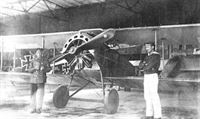 |
J.Herris, J.Leckscheid - Fokker Aircraft of WWI. Vol.3: Early Biplane Fighters /Centennial Perspective/ (53) |
| Another Navy D.III, this time a late-production example. By comparison to the aircraft shown above, this one features aileron wings and it is armed with LMG 08/15 machine guns. Halberstadt D.817/16 can be seen in the background. |
 |
Сайт - Pilots-and-planes /WWW/ |
| Техник демонстрирует легкость фюзеляжа "Хальберштадта" D.II. Halberstadt D.II(Han) 818/16. being admired by the men; the light weight is indicated by the man lifting the tail. The photos of 816/16 and 818/16 show the factory finish of Hannover-built Halberstadt D.ll fighters. Rumpler C.I 2623/16 and Rumpler G.II 122/15 are in the background. |
 |
H.Cowin - Aviation Pioneers /Osprey/ |
| A slightly more powerful version of Halberstadt's D I of late 1915, the D II entered service during the summer of 1916 as a replacement for the now obsolete Fokker Eindeckers. Powered by a 120hp Mercedes D II, its frail appearance belied what proved to be a robust structure. Top level speed of the D II was 90.1 mph at sea level, while its operational ceiling was around 13,000 feet. Carrying a single 7.92mm Spandau, probably just over 100 D IIs were built by the parent company, plus Aviatik and Hannover. Halberstadt D II, 818/16, seen here, served on the Eastern Front. The two-tone green/red-brown camouflage was characteristic of Hannover-built D.II fighters. |
 |
J.Herris - Halberstadt Aircraft of WWI. Volume 2: CL.IV-CLS.I & Fighters /Centennial Perspective/ (45) |
| Halberstadt D.II(Han) 818/16 (work no. 141) was part of a batch of 30 Halberstadt D.II fighters built under license by Hannoveranner. The Hannover-built aircraft had two-color camouflage on the upper surfaces. The stenciled serial numbers in white on the rear fuselage are a key identifier of Hannover-built aircraft. Rumpler C.I 2623/16 is in the background. (Peter M. Grosz Collection/STDB) |
 |
Сайт - Pilots-and-planes /WWW/ |
| Halberstadt D.II(Han) 818/16. The light serial numbers were characteristic of Hannover-built D.II fighters. |
 |
J.Herris - Halberstadt Aircraft of WWI. Volume 2: CL.IV-CLS.I & Fighters /Centennial Perspective/ (45) |
| The Halberstadt fighter at left with the initial 'M' (for Meier?) was Halberstadt D.II(Han) 820/16 serving with Jasta 25 in Macedonia. The serial is not visible on the Halberstadt D.V at right with initial 'L'. |
 |
J.Herris - Halberstadt Aircraft of WWI. Volume 2: CL.IV-CLS.I & Fighters /Centennial Perspective/ (45) |
| Enlarged view of Halberstadt D.II(Han) 820/16 serving with Jasta 25 in Macedonia. |
 |
J.Herris - Halberstadt Aircraft of WWI. Volume 2: CL.IV-CLS.I & Fighters /Centennial Perspective/ (45) |
| Halberstadt D.II(Han) at the front in the snow. (Peter M. Grosz Collection/STDB) |
 |
J.Herris - Halberstadt Aircraft of WWI. Volume 2: CL.IV-CLS.I & Fighters /Centennial Perspective/ (45) |
| Its pilot poses with Halberstadt D.II(Han) 8xx/16 at its unit. |
 |
J.Herris - Halberstadt Aircraft of WWI. Volume 2: CL.IV-CLS.I & Fighters /Centennial Perspective/ (45) |
| Halberstadt D.II(Han); the wider chord of the ailerons at the wing tips is clearly visible., as is the angular cutout in the upper wing. (Peter M. Grosz Collection/STDB) |
 |
J.Herris - Halberstadt Aircraft of WWI. Volume 2: CL.IV-CLS.I & Fighters /Centennial Perspective/ (45) |
| Halberstadt D.II(Han) at the factory before camouflage was applied. (Peter M. Grosz Collection/STDB) |
 |
J.Herris - Halberstadt Aircraft of WWI. Volume 2: CL.IV-CLS.I & Fighters /Centennial Perspective/ (45) |
| Halberstadt D.II fighter of Jasta 14 takes off. |
 |
J.Herris - Halberstadt Aircraft of WWI. Volume 2: CL.IV-CLS.I & Fighters /Centennial Perspective/ (45) |
| Halberstadt D.II(Han) in flight. (Taz Phillips) |
 |
J.Herris - Halberstadt Aircraft of WWI. Volume 2: CL.IV-CLS.I & Fighters /Centennial Perspective/ (45) |
| Halberstadt D.II fighter in flight. |
 |
J.Herris - Halberstadt Aircraft of WWI. Volume 2: CL.IV-CLS.I & Fighters /Centennial Perspective/ (45) |
| Halberstadt D.II '7' of Jasta 5 in flight. |
 |
J.Herris - Halberstadt Aircraft of WWI. Volume 2: CL.IV-CLS.I & Fighters /Centennial Perspective/ (45) |
| Halberstadt D.II in flight. |
 |
J.Herris - Halberstadt Aircraft of WWI. Volume 2: CL.IV-CLS.I & Fighters /Centennial Perspective/ (45) |
| Halberstadt D.II Typenprufung fighter in February 1916. The later-style insignia are consistent with early 1917, but documentation indicates February 1916. (Peter M. Grosz Collection/STDB) |
 |
J.Herris - Halberstadt Aircraft of WWI. Volume 2: CL.IV-CLS.I & Fighters /Centennial Perspective/ (45) |
| Halberstadt D.II fighter in the field. (Peter M. Grosz Collection/STDB) |
 |
J.Herris - Halberstadt Aircraft of WWI. Volume 2: CL.IV-CLS.I & Fighters /Centennial Perspective/ (45) |
| Halberstadt D.II fighter in a hangar. Insignia are painted over white panels despite its light finish. |
 |
J.Herris - Halberstadt Aircraft of WWI. Volume 2: CL.IV-CLS.I & Fighters /Centennial Perspective/ (45) |
| Halberstadt D.II fighter photographed for a recognition manual. The distinctive extended ailerons and 'all flying' tail surfaces are well shown. The airfoil radiator is also prominent. (Peter M. Grosz Collection/STDB) |
 |
J.Herris - Halberstadt Aircraft of WWI. Volume 2: CL.IV-CLS.I & Fighters /Centennial Perspective/ (45) |
| Halberstadt D.II of Kampfstaffel Metz in 1916. A flare pistol is built into the fuselage. (Peter M. Grosz Collection/STDB) |
 |
J.Herris - Halberstadt Aircraft of WWI. Volume 2: CL.IV-CLS.I & Fighters /Centennial Perspective/ (45) |
| Halberstadt D.II of Kampfstaffel Metz in 1916. (Peter M. Grosz Collection/STDB) |
 |
J.Herris - Halberstadt Aircraft of WWI. Volume 2: CL.IV-CLS.I & Fighters /Centennial Perspective/ (45) |
| Halberstadt D.II in dark finish and outlined national insignia. (Peter M. Grosz Collection/STDB) |
 |
J.Herris - Halberstadt Aircraft of WWI. Volume 2: CL.IV-CLS.I & Fighters /Centennial Perspective/ (45) |
| Halberstadt D.II in the field. |
 |
Сайт - Pilots-and-planes /WWW/ |
| Halberstadt D.ll of Pour le Merite holder Ernst von Althaus that he flew with Jasta 4. Halberstadt D.II purportedly flown by Leutnant Walter Hohndorf of Jasta 14. |
 |
J.Herris - Halberstadt Aircraft of WWI. Volume 2: CL.IV-CLS.I & Fighters /Centennial Perspective/ (45) |
| Halberstadt D.II fighter photographed for a recognition manual. The extended ailerons are notable. (Peter M. Grosz Collection/STDB) |
 |
J.Herris - Halberstadt Aircraft of WWI. Volume 2: CL.IV-CLS.I & Fighters /Centennial Perspective/ (45) |
| Halberstadt D.II fighter photographed for a recognition manual. Lack of fixed tail surfaces is distinctive. |
 |
J.Herris - Halberstadt Aircraft of WWI. Volume 2: CL.IV-CLS.I & Fighters /Centennial Perspective/ (45) |
| Halberstadt D.II fighter with part of its cowling missing. (Peter M. Grosz Collection/STDB) |
 |
Сайт - Pilots-and-planes /WWW/ |
| Halberstadt D.II supposedly flown by Lt. Walter Hohndorf. The small tube projecting from the cockpit held a flare pistol used for signaling. (Peter M. Grosz Collection/STDB) |
 |
J.Herris - Halberstadt Aircraft of WWI. Volume 2: CL.IV-CLS.I & Fighters /Centennial Perspective/ (45) |
| Halberstadt D.II, reportedly flown by Wintgens, in a hangar. |
 |
J.Herris - Halberstadt Aircraft of WWI. Volume 2: CL.IV-CLS.I & Fighters /Centennial Perspective/ (45) |
| Halberstadt D.II fighter in the field. (Peter M. Grosz Collection/STDB) |
 |
J.Herris - Halberstadt Aircraft of WWI. Volume 2: CL.IV-CLS.I & Fighters /Centennial Perspective/ (45) |
| Halberstadt D.II assigned to FliegerAbteilung 280. |
 |
J.Herris - Halberstadt Aircraft of WWI. Volume 2: CL.IV-CLS.I & Fighters /Centennial Perspective/ (45) |
| Halberstadt D.II fighter in the field. A rare SSW E.I is at right background. (Peter M. Grosz Collection/STDB) |
 |
J.Herris - Halberstadt Aircraft of WWI. Volume 2: CL.IV-CLS.I & Fighters /Centennial Perspective/ (45) |
| Halberstadt D.II with pilot and mechanics, all unknown. |
 |
J.Herris - Halberstadt Aircraft of WWI. Volume 2: CL.IV-CLS.I & Fighters /Centennial Perspective/ (45) |
| This rare photo reportedly shows Hohndorf's Halberstadt D.II that was specially modified in the field to carry two machine guns on its starboard side. Similar modifications were later made to two other D.II fighters flown by Wilhelm Frankl and Fritz Otto Bernert. (photo courtesy of Reinhard Kastner) |
 |
J.Herris - Halberstadt Aircraft of WWI. Volume 2: CL.IV-CLS.I & Fighters /Centennial Perspective/ (45) |
| Pristine Halberstadt D.II. |
 |
J.Herris - Halberstadt Aircraft of WWI. Volume 2: CL.IV-CLS.I & Fighters /Centennial Perspective/ (45) |
| An unidentified Halberstadt D.II at the front. The translucent wing enables us to see the wing insignia are painted over white panels despite its overall light finish. The Halberstadt D.II powered by the 120 hp Mercedes D.II was the first German biplane fighter to reach the front. Despite its delicate appearance, with no fixed fin, it was a very robust aircraft. Fitted with a single machine gun, it out-performed and out-maneuvered the preceding German Eindeckers in every respect and was at least as good as the DH.2 and Nieuport 11 fighters the Allies were using when it appeared. Some aircraft were modified at the unit level to carry two synchronized machine guns. The later Halberstadt CL.II bears a strong family resemblance. |
 |
J.Herris - Halberstadt Aircraft of WWI. Volume 2: CL.IV-CLS.I & Fighters /Centennial Perspective/ (45) |
| Halberstadt D.II in the snow at the front. (Peter M. Grosz Collection/STDB) |
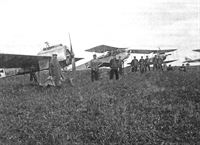 |
J.Herris - Halberstadt Aircraft of WWI. Volume 2: CL.IV-CLS.I & Fighters /Centennial Perspective/ (45) |
| Halberstadt D.II 'P' second from left and a Fokker E.III at left together with two-seaters at right indicate a Flieger Abteilung. |
 |
O.Thetford, P.Gray - German Aircraft of the First World War /Putnam/ |
| Halberstadt D II of Kampfeinshzer Staffel II. |
 |
J.Herris - Halberstadt Aircraft of WWI. Volume 2: CL.IV-CLS.I & Fighters /Centennial Perspective/ (45) |
| Halberstadt D.II fighter in the field. |
 |
J.Herris - Halberstadt Aircraft of WWI. Volume 2: CL.IV-CLS.I & Fighters /Centennial Perspective/ (45) |
| Halberstadt D.II fighter, reportedly in Macedonia.The pilot is unknown. |
 |
J.Herris - Halberstadt Aircraft of WWI. Volume 2: CL.IV-CLS.I & Fighters /Centennial Perspective/ (45) |
| The Jastaschule at Famars airfield near Valenciennes with Halberstadt fighters. At right is a D.V; the other two fighters are D.II. (Peter M. Grosz Collection/STDB) |
 |
J.Herris - Halberstadt Aircraft of WWI. Volume 2: CL.IV-CLS.I & Fighters /Centennial Perspective/ (45) |
| Lineup of Halberstadt D.II, D.III, and D.V fighters at Jastaschule I. Third aircraft from the right is an Albatros D.I. |
 |
J.Herris - Halberstadt Aircraft of WWI. Volume 2: CL.IV-CLS.I & Fighters /Centennial Perspective/ (45) |
| Leutnant Ernst Freiherr von Althaus of Jasta 4 in his Halberstadt D.II. He is sitting in the cockpit with engine running. |
 |
Сайт - Pilots-and-planes /WWW/ |
 |
J.Herris - Halberstadt Aircraft of WWI. Volume 2: CL.IV-CLS.I & Fighters /Centennial Perspective/ (45) |
| Pour le Merite holder Ernst von Althaus inspects his Halberstadt D.II. The upper cowling panel is not fastened. |
 |
Сайт - Pilots-and-planes /WWW/ |
| Freiherr von Althaus inspecting the nose of his Halberstadt D.II. |
 |
J.Herris - Halberstadt Aircraft of WWI. Volume 2: CL.IV-CLS.I & Fighters /Centennial Perspective/ (45) |
| Oblt. Ernst von Althaus (second from left), Lt. Alfred Lenz (third from left), Oswald Boelcke and Lt. Dietsch stand close to a pristine-looking Halberstadt D.II. This may have been the early model delivered to Douai just a few days after Immelmann's death that Boelcke test flew and took into combat after attending Immelmann's memorial service. (Peter M. Grosz Collection/STDB) |
 |
J.Herris - Halberstadt Aircraft of WWI. Volume 2: CL.IV-CLS.I & Fighters /Centennial Perspective/ (45) |
| Having just landed in his Halberstadt D.II fighter following his sixth confirmed victory, Rudolf Berthold receives a congratulatory hand shake from FFA 23's CO, Hptm. Hermann Palmer. (DEHLA collection/Marton Szigeti) |
 |
J.Herris - Halberstadt Aircraft of WWI. Volume 2: CL.IV-CLS.I & Fighters /Centennial Perspective/ (45) |
| Oblt. Hermann Goring in a Halberstadt D.II at Metz. |
 |
J.Herris - Halberstadt Aircraft of WWI. Volume 2: CL.IV-CLS.I & Fighters /Centennial Perspective/ (45) |
| Oblt. Hermann Goring in a Halberstadt D.II at Metz. |
 |
J.Herris - Halberstadt Aircraft of WWI. Volume 2: CL.IV-CLS.I & Fighters /Centennial Perspective/ (45) |
| Bruno Loerezer (at left) and Oblt. Hermann Goring (at right) at Kampfstaffel Metz. The man in the middle is unidentified. |
 |
J.Herris - Halberstadt Aircraft of WWI. Volume 2: CL.IV-CLS.I & Fighters /Centennial Perspective/ (45) |
| Hohndorf sits in the cockpit of his Halberstadt D.II fighter. The ammunition access panel forward of the cockpit has been removed for servicing. (DEHLA collection/Marton Szigeti) |
 |
J.Herris - Halberstadt Aircraft of WWI. Volume 2: CL.IV-CLS.I & Fighters /Centennial Perspective/ (45) |
| Hohndorf makes final adjustments to his flight clothing as he prepares take off in his D.II fighter (engine already warming up). Oblt. Ernst von Althaus stands next to him and their Jasta 4 CO, Oblt. Hans-Joachim Buddecke, is second from left. |
 |
J.Herris - Halberstadt Aircraft of WWI. Volume 2: CL.IV-CLS.I & Fighters /Centennial Perspective/ (45) |
| Halberstadt D.II powered by a 120 hp Mercedes D.II engine. Oblt. Stefan Kirmaier, who assumed command of Jasta 2 after Boelcke's death, poses in front while a mechanic sits in the cockpit ready to start the engine. Kirmaier scored 11 victories before his death in action on 22 November 1916. |
 |
J.Herris - Halberstadt Aircraft of WWI. Volume 2: CL.IV-CLS.I & Fighters /Centennial Perspective/ (45) |
| Halberstadt D.II. Oblt. Stefan Kirmaier, who assumed command of Jasta 2 after Boelcke's death, poses in front while a mechanic sits in the cockpit; he has now started the engine. |
 |
J.Herris - Halberstadt Aircraft of WWI. Volume 2: CL.IV-CLS.I & Fighters /Centennial Perspective/ (45) |
| Halberstadt D.II serving as a trainer at a Jastaschule with Flieger Walther Krause in the cockpit. Krause was killed at the Jastaschule on 13 March 1917. The pilot aimed the fixed gun by looking through the square cut-out in the windscreen. (Peter M. Grosz Collection/STDB) |
 |
J.Herris - Halberstadt Aircraft of WWI. Volume 2: CL.IV-CLS.I & Fighters /Centennial Perspective/ (45) |
| Pour lr Merite holder Lt. Gustav Leffers of Jasta 1 visited Jagdstaffelschule 1 on leave; here he is with fellow pilots and a Halberstadt D.II. |
 |
J.Herris - Halberstadt Aircraft of WWI. Volume 2: CL.IV-CLS.I & Fighters /Centennial Perspective/ (45) |
| Lt. Werner Marwitz of Jasta 9 and his Halberstadt D.II fighter. |
 |
J.Herris - Halberstadt Aircraft of WWI. Volume 2: CL.IV-CLS.I & Fighters /Centennial Perspective/ (45) |
| Pour le Merite ace Otto Parschau in a Halberstadt D.II. |
 |
J.Herris - Halberstadt Aircraft of WWI. Volume 2: CL.IV-CLS.I & Fighters /Centennial Perspective/ (45) |
| Pour le Merite winner Lt. Otto Parschau smiles for the camera in a new Halberstadt D.II fighter that was likely the one he used to down his fifth and sixth victims. Parschau scored eight victories before he died of wounds suffered in combat. |
 |
J.Herris - Halberstadt Aircraft of WWI. Volume 2: CL.IV-CLS.I & Fighters /Centennial Perspective/ (45) |
| Oblt. Kurt Guido Scheffer with his Halberstadt D.II. Some engine cowling panels have been removed. Scheffer was one time adjutant {OzbV) of Jasta 11. However, this photo was not taken at Jasta 11 - possibly at FEA 6. |
 |
J.Herris - Halberstadt Aircraft of WWI. Volume 2: CL.IV-CLS.I & Fighters /Centennial Perspective/ (45) |
| Halberstadt D.II of Jasta 13, Lt. Schurz at left. |
 |
J.Herris - Halberstadt Aircraft of WWI. Volume 2: CL.IV-CLS.I & Fighters /Centennial Perspective/ (45) |
| Idflieg test pilot Uffz. Wendeler with a Halberstadt D.II at Adlershof. Under the fuselage the aileron controls can be seen. (Peter M. Grosz Collection/STDB) |
 |
Сайт - Pilots-and-planes /WWW/ |
| Lt. Kurt Wintgens of Jasta 1 with his Halberstadt D.II. The black hole in the cockpit side may have been an opening for a flare pistol. (Peter M. Grosz Collection/STDB) |
 |
J.Herris - Halberstadt Aircraft of WWI. Volume 2: CL.IV-CLS.I & Fighters /Centennial Perspective/ (45) |
| Kurt Wintgens (sans Pour le Merits) with his Halberstadt D.II. |
 |
J.Herris - Halberstadt Aircraft of WWI. Volume 2: CL.IV-CLS.I & Fighters /Centennial Perspective/ (45) |
| Lt. Kurt Wintgens poses in front of his Halberstadt D.II that had been adorned by garlands and a wreath in celebration of a special event that most likely was his Pour le Merite - qualifying eighth victory on 30 June 1916. (Peter M. Grosz collection/STDB) |
 |
J.Herris - Halberstadt Aircraft of WWI. Volume 2: CL.IV-CLS.I & Fighters /Centennial Perspective/ (45) |
| Lt. Kurt Wintgens (second from left), Generaloberst Ludwig von Falkenhausen (third from left), Lt. Walter Hohndorf (second from right), and two other men who all appeared in another group portrait taken shortly after Falkenhausen had bestowed the Pour le Merite upon Wintgens. |
 |
J.Herris - Halberstadt Aircraft of WWI. Volume 2: CL.IV-CLS.I & Fighters /Centennial Perspective/ (45) |
| A lineup of pilots in front of a Halberstadt D.II at Jastaschule I's Famars airfield. Left to right: Offz-Stv. Kohler, Lt. Ferdinand Groner, Lt. Karl Stock, Oblt. Hans Berr, Lt. Hans von Schell, Lt. Breitbach, Lt. Walter Krause, Lt. Karl Spitzhoff, Lt. Josef Jacobs. Berr and Jacobs were awarded the Pour le Merite as fighter aces. Berr commanded the Jastaschule from 19 December 1916 to 5 February 1917, and Jacobs was one of his temporary instructors. |
 |
J.Herris - Halberstadt Aircraft of WWI. Volume 2: CL.IV-CLS.I & Fighters /Centennial Perspective/ (45) |
| Closeup of a Halberstadt D.II type-test fighter showing its 120 hp Mercedes D.II engine and airfoil radiator. The pilot's field of view was constrained by the cramped struts and plumbing. (Peter M. Grosz Collection/STDB) |
 |
Сайт - Pilots-and-planes /WWW/ |
| Halberstadt D.III |
 |
Сайт - Pilots-and-planes /WWW/ |
 |
J.Herris - Halberstadt Aircraft of WWI. Volume 2: CL.IV-CLS.I & Fighters /Centennial Perspective/ (45) |
| Halberstadt D.III of Jasta 5. (Peter M. Grosz collection/STDB) |
 |
Сайт - Pilots-and-planes /WWW/ |
| Хальберштадт D.II. Западный фронт, 1916 год |
 |
J.Herris - Halberstadt Aircraft of WWI. Volume 2: CL.IV-CLS.I & Fighters /Centennial Perspective/ (45) |
| Halberstadt D.III fighter in the snow. (Peter M. Grosz Collection/STDB) |
 |
J.Herris - Halberstadt Aircraft of WWI. Volume 2: CL.IV-CLS.I & Fighters /Centennial Perspective/ (45) |
| Halberstadt D.III fighter preparing for take-off at the front. (Peter M. Grosz Collection/STDB) |
 |
J.Herris - Halberstadt Aircraft of WWI. Volume 2: CL.IV-CLS.I & Fighters /Centennial Perspective/ (45) |
| Lt. Hans von Keudell's Halberstadt D.III of Jasta 1, marked with his personal "K" emblem. |
 |
J.Herris - Halberstadt Aircraft of WWI. Volume 2: CL.IV-CLS.I & Fighters /Centennial Perspective/ (45) |
| Halberstadt D.III fighter at the front. (Peter M. Grosz Collection/STDB) |
 |
J.Herris - Halberstadt Aircraft of WWI. Volume 2: CL.IV-CLS.I & Fighters /Centennial Perspective/ (45) |
| Хальберштадт D.II. Македония, 1917 год The D III with an Argus As II (on photo) was otherwise similar to the Mercedes-powered D II. Halberstadt D.III with streaked camouflage that was unusual for a Halberstadt. (Peter M. Grosz collection/STDB). |
 |
J.Herris - Halberstadt Aircraft of WWI. Volume 2: CL.IV-CLS.I & Fighters /Centennial Perspective/ (45) |
| An unknown pilot and his Halberstadt D.III fighter. |
 |
J.Herris - Halberstadt Aircraft of WWI. Volume 2: CL.IV-CLS.I & Fighters /Centennial Perspective/ (45) |
| Halberstadt D.III fighter at the front. (Peter M. Grosz Collection/STDB) |
 |
Сайт - Pilots-and-planes /WWW/ |
 |
J.Herris - Halberstadt Aircraft of WWI. Volume 2: CL.IV-CLS.I & Fighters /Centennial Perspective/ (45) |
| Halberstadt D.III fighter in front of a permanent hangar at Metz-Frescaty airfield. A belt of signal flares are behind the cockpit. (Peter M. Grosz Collection/STDB) |
 |
J.Herris - Halberstadt Aircraft of WWI. Volume 2: CL.IV-CLS.I & Fighters /Centennial Perspective/ (45) |
| Halberstadt D.III 'F' of Jasta 5 on its airfield after landing. (Peter M. Grosz Collection/STDB) |
 |
J.Herris - Halberstadt Aircraft of WWI. Volume 2: CL.IV-CLS.I & Fighters /Centennial Perspective/ (45) |
| A Halberstadt fighter of Jasta 5 approaching to land. (Peter M. Grosz Collection/STDB) |
 |
J.Herris - Halberstadt Aircraft of WWI. Volume 2: CL.IV-CLS.I & Fighters /Centennial Perspective/ (45) |
| From left, an Albatros D.III, a Halberstadt D.III, and a Spad 7 at Jastaschule I at Famars airfield near Valenciennes. The Albatros D.III is Hptm. Martin Zander's personal machine. It is marked with the letter 'Z' on the bottom wing undersurfaces and is faintly seen on the original image. |
 |
J.Herris - Halberstadt Aircraft of WWI. Volume 2: CL.IV-CLS.I & Fighters /Centennial Perspective/ (45) |
| This is a Halberstadt D.III at Jastaschule I at Famars airfield near Valenciennes, along with an Albatros D.III. The Spad was one of a whole flight of captured Allied aircraft at the Jastaschule, something of an aggressor squadron. The man on the left is Hptm. Martin Zander, the commander of the school. Zander (five victories) had been pulled from his command of Jasta 1 to take over the new school when it was formed in late November 1916. The man on the right with the big ears is Oblt. Erich Hahn, one of Zander's former pilots at Jasta 1. Hahn appears to have merely been visiting as he was not on the staff of the Jastaschule. Hahn (six victories) commanded the new Jasta 19 until his death on 4 September 1917. |
 |
J.Herris - Halberstadt Aircraft of WWI. Volume 2: CL.IV-CLS.I & Fighters /Centennial Perspective/ (45) |
| Halberstadt D.III fighters equipped with experimental wireless of the Kampfeinsitzer Staffel attached to the FT-Versuchsabteilung that experimented with ground-controlled intercepts in early 1917. The unit was commanded by Lt. Dr. Gericke. (Peter M. Grosz Collection/STDB) |
 |
J.Herris - Halberstadt Aircraft of WWI. Volume 2: CL.IV-CLS.I & Fighters /Centennial Perspective/ (45) |
| Halberstadt D.III fighter modified to carry two machine guns on the starboard side. This aircraft was flown by Lt. Otto Bernert of Jasta Boelcke. Bernert was awarded the Pour le Merite after 20 victories and went on to score 27 victories. (Peter M. Grosz Collection/STDB) |
 |
J.Herris - Halberstadt Aircraft of WWI. Volume 2: CL.IV-CLS.I & Fighters /Centennial Perspective/ (45) |
| Halberstadt D.III modified to carry two guns; it is probably of Jasta 4. |
 |
J.Herris - Halberstadt Aircraft of WWI. Volume 2: CL.IV-CLS.I & Fighters /Centennial Perspective/ (45) |
| Frankl's specially-modified Halberstadt D.III fighter at Valleroy on 29 November 1916. Two machine guns were mounted on the starboard side as opposed to the usual one. Although the Halberstadt fighter clearly outperformed the Fokker E.IV, several pilots bemoaned the fact that it was armed with only one machine gun versus the E.IV's two. Apparently, someone at Jasta 4 decided to rectify this in a field modification. (Peter M. Grosz collection/STDB) |
 |
J.Herris - Halberstadt Aircraft of WWI. Volume 2: CL.IV-CLS.I & Fighters /Centennial Perspective/ (45) |
| Lt. Otto Bernert with his Halberstadt D.III of Jasta 4; it has been modified to carry two guns and the exhaust lowered. (Peter M. Grosz collection/STDB). |
 |
J.Herris - Halberstadt Aircraft of WWI. Volume 2: CL.IV-CLS.I & Fighters /Centennial Perspective/ (45) |
| Lt. Otto Bernert (at left) of Jasta 4 with his Halberstadt D.III fighter. |
 |
J.Herris - Halberstadt Aircraft of WWI. Volume 2: CL.IV-CLS.I & Fighters /Centennial Perspective/ (45) |
| Oblt. Ernst von Althaus poses in front of his Halberstadt D.III with men from his ground team. From left to right: Weisser (mechanic), Neumann (orderly), Althaus, Reiche (mechanic). Althaus' dog, Mousse, is at his master's feet. We know this is a D.III because of its Argus engine. However, the standard D.III machine gun configuration was one mounted on the starboard side of the nose. Here we see a machine gun on the port side. We have several photographs of another Jasta 4 D.III flown by both Otto Bernert and Wilhelm Frankl that sported two machine guns on its starboard side, so it is possible that Althaus had his D.III specially modified to carry a second machine gun on its port side. |
 |
J.Herris - Halberstadt Aircraft of WWI. Volume 2: CL.IV-CLS.I & Fighters /Centennial Perspective/ (45) |
| These two photos capture Oblt. Ernst von Althaus' Halberstadt D.III fighter in a Jasta 4 lineup, ready for action. Note the letter "A" just aft of the fuselage cross. Althaus scored 9 victories and was awarded the Pour le Merite. |
 |
J.Herris - Halberstadt Aircraft of WWI. Volume 2: CL.IV-CLS.I & Fighters /Centennial Perspective/ (45) |
| Vzfw Ernst Clausnitzer of Jasta 4 with his Halberstadt D.III fighter on October 5, 1916. Clausnitzer scored three victories but was captured on 16 July 1917, when his Albatros D.V 1162/17 was shot down by Spads of No. 23 Sqdn. during his attack on a balloon. |
 |
J.Herris - Halberstadt Aircraft of WWI. Volume 2: CL.IV-CLS.I & Fighters /Centennial Perspective/ (45) |
| Ernst Clausnitzer of Jasta 4 in his Halberstadt D.III fighter. |
 |
J.Herris - Halberstadt Aircraft of WWI. Volume 2: CL.IV-CLS.I & Fighters /Centennial Perspective/ (45) |
| Manfred von Richthofen in conversation with pre-war friend Lt. Alfred Gerstenberg (at left) during a visit to Breslau airfield in June 1917. A Halberstadt D.II or D.III fighter is in the background. (Peter M. Grosz collection/STDB) |
 |
J.Herris - Halberstadt Aircraft of WWI. Volume 2: CL.IV-CLS.I & Fighters /Centennial Perspective/ (45) |
| Lt. Kurt Wolff with a Halberstadt fighter of Jasta 11; although obscured by the propeller, the aileron appears to be that of a D.V. In the background is a Halberstadt D.II or D.III which can be identified by the extended ailerons. |
 |
J.Herris - Halberstadt Aircraft of WWI. Volume 2: CL.IV-CLS.I & Fighters /Centennial Perspective/ (45) |
| Halberstadt fighter performing a loop over a Zeppelin hangar, probably at Metz-Frescaty airfield. |
 |
J.Herris - Albatros Aircraft of WWI. Volume 4: Fighters /Centennial Perspective/ (27) |
| Albatros fighters formed the backbone of the German fighter units until the arrival of the Fokker D.VII in the spring of 1918. A lone Halberstadt fighter on the left joins a predominantly Albatros lineup at this Jasta. |
 |
J.Herris - Halberstadt Aircraft of WWI. Volume 2: CL.IV-CLS.I & Fighters /Centennial Perspective/ (45) |
| Halberstadt and Albatros D.II fighters at the Jastaschule at Famars airfield near Valenciennes. (Peter M. Grosz collection/STDB) |
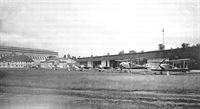 |
J.Herris - Halberstadt Aircraft of WWI. Volume 2: CL.IV-CLS.I & Fighters /Centennial Perspective/ (45) |
| Three Halberstadt D.III fighters are at the far end of this lineup at Grand Metz, ready for action. In this case, it is training action. At left is an Albatros C.III with an Albatros C.V second from left and two Fokker Eindeckers in the middle. (Peter M. Grosz Collection/STDB) |
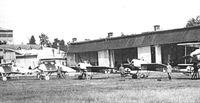 |
J.Herris, J.Scott - Fokker Aircraft of WWI. Vol.2: Eindeckers /Centennial Perspective/ (52) |
| Two Fokker E.IIIs are accompanied by a pair of Halberstadt D-types on the field of Kasta Metz. (Peter M. Grosz collection/STDB) |
 |
J.Herris - Halberstadt Aircraft of WWI. Volume 2: CL.IV-CLS.I & Fighters /Centennial Perspective/ (45) |
| Many of the Kampfeinsitzerkommandos and the first Jagdstaffeln operated a mixed selection of aircraft types in the late summer of 1916. In the center of this view, a disassembled Fokker E.II/III can be seen, as well as four Halberstadt D-type fighters and two Fokker D.Is, with D.I 168/16 seen at right. Pictured here is the newly-formed Jagdstaffel 4 at Roupy airfield, with its characteristic barn hangar seen at right. Initial members of the Staffel included Oblt. Buddecke, Oblt. Berthold, Ltn. Bernert, Vzfw. Frankl, Ltn. Fugner and Vzfw. Clausnitzer. The six biplane fighters in the photo may well have been the initial equipment for these six men when the unit was formed on 25 August. |
 |
J.Herris - German Aircraft of Minor Manufacturers in WW1. Volume II /Centennial Perspective/ (50) |
| The modest Markische company facilities. Halberstadt fighters are at left and an Albatros C.III is at right. (Peter M. Grosz collection, STDB) |
 |
J.Herris - Roland Aircraft of WWI /Centennial Perspective/ (9) |
| This unit lineup features a Roland-built D.II in the foreground followed by Halberstadt and Fokker biplanes. |
 |
J.Herris - Development of German Warplanes in WWI /Centennial Perspective/ (1) |
| This photo of Kest 4b at Freiburg shows a first-generation Fokker E.IV fighter at left. Second-generation Fokker D.IIs are at the far end of the second row and the two closest fighters in the third row. Two second-generation Fokker D.III fighters are nearest the camera in the middle row. By far the best aircraft in the photo is the Halberstadt fighter furthest from the camera in the third row. The early Fokker biplane fighters were inferior to the Halberstadt and Albatros biplane fighters and were obsolescent on the Western Front. 1917 was a tough year for Fokker, who in January 1917 was directed to build 200 AEG C.IV two-seat trainers instead of his own designs. |
 |
J.Herris, J.Leckscheid - Fokker Aircraft of WWI. Vol.3: Early Biplane Fighters /Centennial Perspective/ (53) |
| When Kampfeinsitzerstaffel (Kest) 4b was formed by dividing Kest 4 into "a" and "b" designated half-units, they moved from Boblingen to Freiburg im Breisgau on 15 April 1917. This group photograph is thought to have been taken to commemorate their arrival at Freiburg, on or soon after this date. Their initial complement of fighters consisted of a somewhat motley collection of types: a Fokker E.IV named Hannah can be seen at far left, the only remaining Eindecker in the unit. The other aircraft seen in the picture are four Fokker D.III, three D.II, and a single Halberstadt, completing the rear trio of aircraft. Note the "Iron Cross" marked wheel hubs, which were possibly the new unit marking for Kest 4b. |
 |
J.Herris - LVG Aircraft of WWI. Volume 1: B-Types & C.I /Centennial Perspective/ (34) |
| LVG B-types among other aircraft (Euler B.I, Halberstadt D, etc.) under repair in a repair depot. |
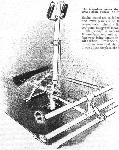 |
Журнал - Flight за 1917 г. |
| The control of the 1916 Halberstadt biplane, showing the adjusting link, forward of the rudder bar, for varying the distance from the latter to the seat. |
 |
J.Herris - Halberstadt Aircraft of WWI. Volume 2: CL.IV-CLS.I & Fighters /Centennial Perspective/ (45) |
| This Halberstadt D.II crashed in the snow. (Peter M. Grosz Collection/STDB) |
 |
J.Herris - Halberstadt Aircraft of WWI. Volume 2: CL.IV-CLS.I & Fighters /Centennial Perspective/ (45) |
| Halberstadt D.II crash, probably from Jastaschule 1. |
 |
J.Herris - Halberstadt Aircraft of WWI. Volume 2: CL.IV-CLS.I & Fighters /Centennial Perspective/ (45) |
| Above: Halberstadt D.II(Av) 605/16 crashed on February 4 1917 by Lt. Klein at Jastaschule Valenciennes. (Peter M. Grosz Collection/STDB) |
 |
J.Herris - Halberstadt Aircraft of WWI. Volume 2: CL.IV-CLS.I & Fighters /Centennial Perspective/ (45) |
| Another view of Halberstadt D.II(Av) 605/16 crashed on February 4 1917 by Lt. Klein at Jastaschule Valenciennes. The wreckage is guarded. (Bruno Schmaling) |
 |
C.Owers - Hansa-Brandenburg Aircraft of WWI. Volume 3 - Monoplane Seaplanes /Centennial Perspective/ (19) |
| Austro-Hungarian warplanes abandoned at Aidussino in November 1918 symbolize the defeat and disintegration of the Austro-Hungarian Empire. An UFAG-built Brandenburg C.I (369 series?) is in the foreground. A Phonix D.II rests on its nose with Phonix C.I 121.60 upside down. The noses of an Aviatik D.I and UFAG C.I are at right. |
 |
J.Herris - Halberstadt Aircraft of WWI. Volume 2: CL.IV-CLS.I & Fighters /Centennial Perspective/ (45) |
| Two views of a somewhat badly strafed Halberstadt biplane brought down "somewhere in France." The planes, struts, chassis, &c, form the heap in the background. Remains of a crashed Halberstadt D.II fighter showing construction details. (Peter M. Grosz Collection/STDB) |
 |
J.Herris - Halberstadt Aircraft of WWI. Volume 2: CL.IV-CLS.I & Fighters /Centennial Perspective/ (45) |
 |
Журнал - Flight за 1916 г. |
| The German Halberstadt single seater, of which a good deal has been heard lately. - This machine, it will be noticed, has Morane type fuselage and tail planes. The large stationary engine is fairly effectively cowled in so as to reduce head resistance. Although being a comparatively small machine it has two pairs of struts on each side, probably necessitated by the large, heavy engine. This is one of the types with which the German pilots are getting some of their own back for our air ascendancy during the past. |
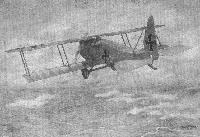 |
Журнал - Flight за 1917 г. |
| THE 1916 HALBERSTADT FIGHTING BIPLANE. - Drawing of the machine in flight, seen from the rear. |
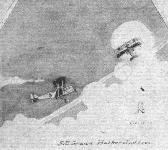 |
Журнал - Flight за 1917 г. |
| Some unique sketches of aircraft at work overseas by Captain K. H. Riversdale Elliot, Scottish Rifles and R.F.C.. The drawings are particularly accurate and full of movement, and carry the greater weight as from an active pilot. |
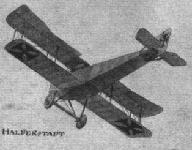 |
Журнал - Flight за 1917 г. |
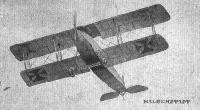 |
Журнал - Flight за 1917 г. |
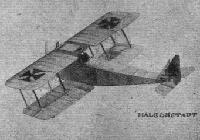 |
Журнал - Flight за 1917 г. |
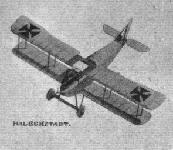 |
Журнал - Flight за 1917 г. |
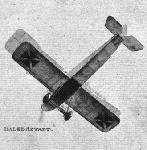 |
Журнал - Flight за 1917 г. |
 |
Журнал - Flight за 1917 г. |
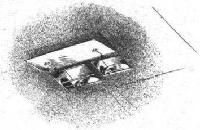 |
Журнал - Flight за 1917 г. |
| The trap-door under the wing, giving access to the aileron cable pulleys, on the 1916 Halberstadt biplane. |
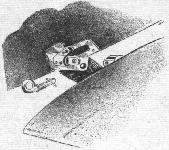 |
Журнал - Flight за 1917 г. |
| Method of attaching the lower plane to the fuselage of the 1916 Halberstadt biplane. Note the spring locking device on the pin. |
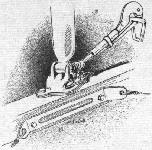 |
Журнал - Flight за 1917 г. |
| The interplane strut fitting and quick release bracing cable attachment of the 1916 Halberstadt biplane. |
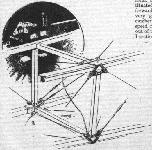 |
Журнал - Flight за 1917 г. |
| Sketch showing the construction of the fuselage of the 1916 Halberstadt biplane. |
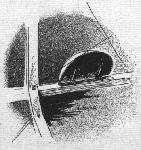 |
Журнал - Flight за 1917 г. |
| The foot-step trap-door on the fuselage of the 1916 Halberstadt biplane, seen from the inside. |
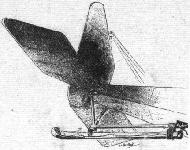 |
Журнал - Flight за 1917 г. |
| The tail-skid of the 1916 Halberstadt biplane. |
 |
Журнал - Flight за 1917 г. |
| Sketch showing metal construction of the elevators and rudder of the 1916 Halberstadt biplane. |
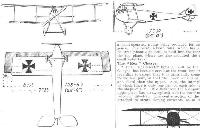 |
Журнал - Flight за 1917 г. |
| The Halberstadt chaser. |
 |
W.Green, G.Swanborough - The Complete Book of Fighters |
| The D III with an Argus As II was otherwise similar to the Mercedes-powered D II (shown). |
 |
O.Thetford, P.Gray - German Aircraft of the First World War /Putnam/ |
 |
R.Kosin - The German Fighter since 1915 /Putnam/ |
| Halberstadt D II |
 |
В.Кондратьев - Самолеты первой мировой войны |
| Halberstadt D.II |
 |
J.Herris - Halberstadt Aircraft of WWI. Volume 2: CL.IV-CLS.I & Fighters /Centennial Perspective/ (45) |
| Halberstadt D.II |
 |
J.Herris - Halberstadt Aircraft of WWI. Volume 2: CL.IV-CLS.I & Fighters /Centennial Perspective/ (45) |
| Halberstadt D.II |
 |
J.Herris - Halberstadt Aircraft of WWI. Volume 2: CL.IV-CLS.I & Fighters /Centennial Perspective/ (45) |
| Halberstadt D.II |
 |
J.Herris - Halberstadt Aircraft of WWI. Volume 2: CL.IV-CLS.I & Fighters /Centennial Perspective/ (45) |
| Halberstadt D.III |
 |
J.Herris - Halberstadt Aircraft of WWI. Volume 2: CL.IV-CLS.I & Fighters /Centennial Perspective/ (45) |
| Halberstadt D.III |
 |
J.Herris - Halberstadt Aircraft of WWI. Volume 2: CL.IV-CLS.I & Fighters /Centennial Perspective/ (45) |
| Halberstadt D.III |